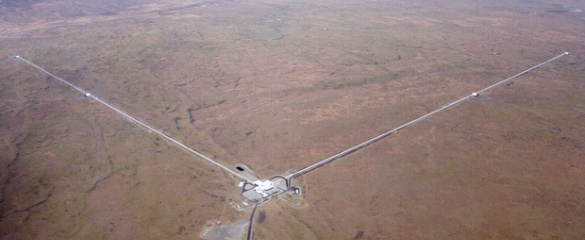What’s next for gravitational waves?

By collecting gravitational wave data at facilities such as LIGO in the US, researchers can better understand the constantly changing nature of the universe. Image credit: LIGO Caltech
The sooner-than-expected discovery of gravitational waves, announced in February, has given a new impetus to scientists in the field, who are now working to make sense of what it means not only for their research but also for our understanding of Einstein’s theory of general relativity.
Imagine two figure skaters on the ice, spiralling in closer and closer toward one another, until they finally form one spinning clump. But you can’t see them. Your only clue to their motion is by listening to how the ice subtly cracks and contorts under their movement over the roar of a packed crowd.
That’s the sort of challenge scientists are up against when they look for gravitational waves – ripples in the fabric of space which are given off during the merger of pairs of black holes or neutron stars, predicted by Einstein’s theory of general relativity.
See full text